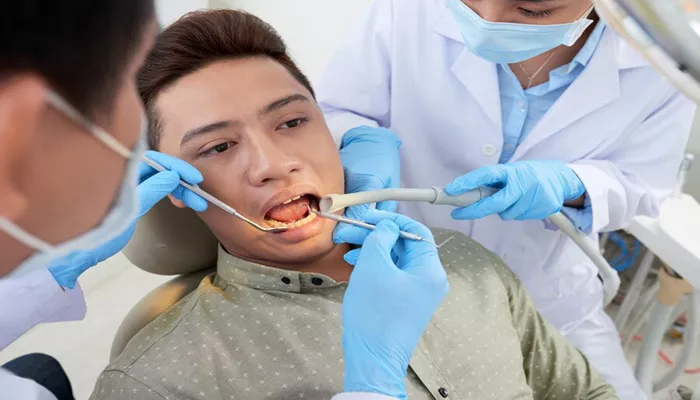Laser cavity filling is a modern dental procedure that uses laser technology to remove decayed tooth material and prepare the tooth for a filling. This method has gained popularity due to its precision and potential to reduce discomfort compared to traditional drilling methods. However, many patients still wonder if laser cavity filling hurts. In this article, we will explore the process, its benefits, and what you can expect in terms of pain during and after the procedure.
What Is Laser Cavity Filling?
Laser cavity filling involves using a dental laser to remove decayed parts of a tooth. This technology combines water and laser energy to safely ablate decayed tissue without causing significant damage to the surrounding healthy tooth structure.
The laser helps keep the tooth hydrated and cool, which can reduce the need for local anesthesia in many cases25.
How Does Laser Cavity Filling Work?
The process of laser cavity filling typically involves several steps:
Preparation: Before starting, your dentist will assess the cavity and decide if laser treatment is suitable.
Laser Application: The dentist uses the laser to remove the decayed portion of the tooth. This process is often described as virtually painless due to the cooling effect of the water and the precision of the laser.
Filling Placement: After removing the decay, the dentist will fill the cavity with a suitable filling material, such as composite resin.
Final Check: The dentist ensures the filling is properly shaped and polished to match your natural teeth.
Does Laser Cavity Filling Hurt?
The question of whether laser cavity filling hurts is a common concern for many patients. Generally, laser cavity filling is considered to be less painful than traditional methods using drills. The laser’s ability to keep the tooth cool and hydrated reduces the risk of thermal damage, which is a common cause of pain in dental procedures.
During the Procedure
Most patients report feeling little to no discomfort during the laser cavity filling process. The precision and minimal heat generated by the laser make it a comfortable option for many. However, some patients might still experience slight sensitivity, especially if the cavity is deep or if they have a low pain threshold.
After the Procedure
After the filling is placed, you might experience some sensitivity or discomfort for a few days. This is normal as your tooth adjusts to the new filling. Your dentist may recommend over-the-counter pain relievers to manage any discomfort.
Benefits of Laser Cavity Filling
Laser cavity filling offers several benefits over traditional methods:
Less Pain: The procedure is often described as virtually painless, reducing the need for local anesthesia in many cases.
Precision: Lasers can target decayed tissue with high precision, preserving more of the healthy tooth structure.
No Drilling Noise: The absence of drilling noise can reduce anxiety for patients who fear the sound of dental drills.
Faster Recovery: Since the laser causes minimal trauma to the tooth and surrounding tissues, recovery time can be shorter.
Comparison with Traditional Methods
Traditional cavity filling involves using a drill to remove decayed tooth material. This method can cause more discomfort due to the heat generated by the drill and the vibrations it produces. In contrast, laser cavity filling is generally more comfortable and less anxiety-provoking.
Traditional Drilling vs. Laser
Pain: Traditional drilling can cause more pain due to heat and vibration, often requiring local anesthesia.
Anxiety: The sound and vibrations of drills can increase anxiety levels, especially in children.
Precision: Lasers are more precise, preserving more of the natural tooth.
Managing Anxiety and Pain
For patients who experience anxiety or fear about dental procedures, there are several strategies to manage these feelings:
Communication: Discuss your concerns with your dentist. They can provide additional measures to help you feel more comfortable during the procedure.
Relaxation Techniques: Deep breathing, meditation, or listening to calming music can help reduce anxiety.
Sedation Dentistry: In some cases, sedation dentistry may be an option for patients with severe anxiety.
Conclusion
Laser cavity filling is a modern dental procedure that offers several advantages over traditional methods, including reduced pain and anxiety. While some patients may still experience slight discomfort, the overall experience is generally well-tolerated and can be a more comfortable option for those who fear dental procedures. By understanding the process and benefits of laser cavity filling, patients can approach their dental appointments with more confidence.

